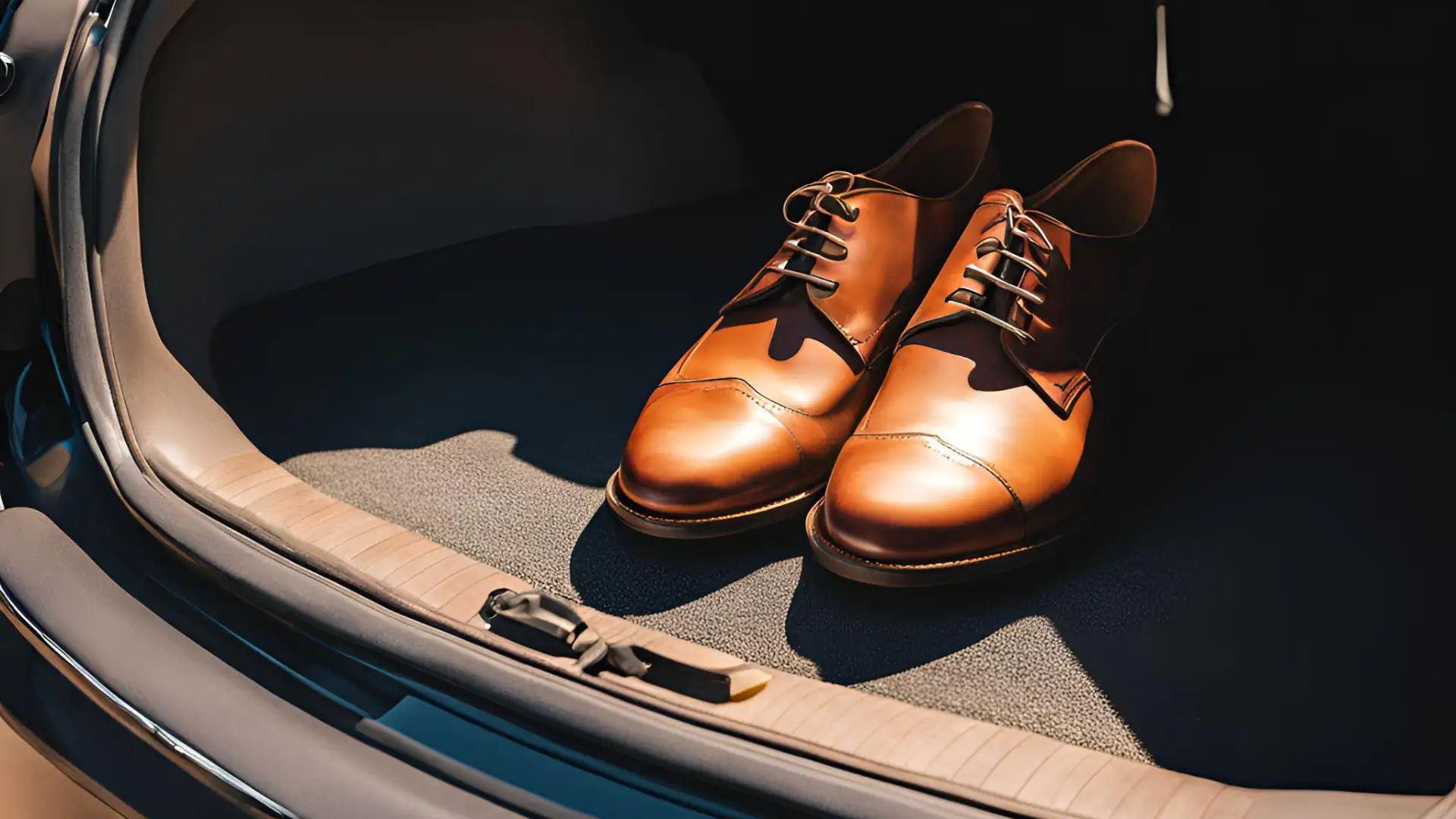Leather shoes are renowned for their style, durability, and comfort, but they require proper care to maintain these qualities. Many people wonder, is a hot car bad for leather shoes? The answer is yes. Extreme heat, such as that found in a parked car, can cause significant harm to leather shoes, leading to fading, drying, and even cracking. In this article, we’ll explore why a hot car is damaging to leather shoes, how to prevent heat damage, and ways to restore shoes that have been affected by high temperatures.
Introduction to Leather Shoes and Heat Exposure
To answer, a hot car is bad for leather shoes, it’s important to understand why leather is especially vulnerable to heat. Leather is a natural material that requires moisture to stay supple and maintain its shape. When leather is exposed to extreme temperatures, such as those found in a hot car, it can dry out quickly and lose its natural flexibility, making it more susceptible to damage. This natural material thrives in moderate conditions, so leaving leather shoes in an extremely hot car could potentially ruin them.
Causes of Heat Exposure in Cars
Cars can become extremely hot when left in direct sunlight, especially during the summer. Is a hot car bad for leather shoes when the temperature inside can reach over 120°F? Absolutely. Here are some common causes of heat exposure inside cars:
- Solar Heating: Sunlight enters through car windows, trapping heat inside.
- No Ventilation: When windows are closed, there’s no airflow, causing the temperature to rise rapidly.
So, if you’re wondering if a hot car is bad for leather shoes, consider how easily your car turns into a mini-oven when parked in the sun.
Effects of High Temperatures on Leather
So, why exactly is a hot car bad for leather shoes? Leather needs moisture to remain soft and flexible. In a hot car, leather’s natural oils evaporate, leaving it dry and prone to cracks. Here’s how heat specifically affects leather:
- Loss of Moisture: High temperatures dry out leather, making it brittle and more likely to crack.
- Color Fading: UV rays in sunlight can lead to color fading, particularly noticeable in darker leather shoes.
- Odor Issues: Heat and humidity create a breeding ground for mold, which can leave an unpleasant odor in leather shoes.
Specific Impact on Leather Shoes
You may wonder, is a hot car bad for leather shoes, or does it depend on the type of leather? While different types of leather vary in how much they resist heat, all types are affected to some extent. For leather shoes specifically, prolonged exposure to high temperatures can result in fading, cracks, wrinkles, and stiffness. This happens because high heat causes the moisture within leather fibers to evaporate, drying the material. This not only makes the leather look dull and aged, but it also affects the comfort and fit of the shoes.
Chemical Reactions in Leather Due to Heat
When leather is exposed to high temperatures, the natural components within it undergo chemical changes. This is a key reason why a hot car is bad for leather shoes; leather becomes more fragile and susceptible to cracks as it heats up. In extreme cases, heat exposure can even alter the texture and appearance of leather by breaking down its natural oils. Leather treated with dyes or finishes is also affected, as heat can cause color changes and fading, particularly in darker or richly colored shoes.
Signs Your Leather Shoes Have Heat Damage
A key question many people have is, is a hot car bad for leather shoes if left only for short periods? The signs of heat damage may appear quickly or develop over time. Here are some common indicators:
- Dry, Cracked Texture: Leather shoes that have lost moisture become dry and may develop cracks.
- Faded or Discolored Areas: Sunlight exposure can result in faded patches or discoloration.
- Odor Problems: Mold and mildew may form if leather is left in a warm, humid car, creating a musty odor.
Short-Term and Long-Term Effects of Heat Exposure on Leather Shoes
When considering whether a hot car is bad for leather shoes, it’s crucial to know that both short-term and long-term effects exist. A brief period of heat exposure, like a few hours in a hot car, can cause minor fading or dryness in leather. However, repeated or prolonged exposure to high temperatures leads to more severe damage, such as permanent cracks, color loss, and a stiff, uncomfortable feel. The effects of long-term heat exposure on leather shoes are often irreversible, making prevention the best approach.
Preventive Measures to Protect Leather Shoes
Wondering if a hot car is bad for leather shoes and how can you prevent it? Here are some steps you can take:
- Use a Shoe Bag: A breathable shoe bag can protect shoes from direct sunlight and reduce heat exposure.
- Park in the Shade: Keeping your car shaded can help prevent extreme interior temperatures.
- Limit Time in the Car: Avoid leaving leather shoes in a hot car for extended periods.
Best Practices for Storing Leather Shoes in Warm Weather
Proper storage is essential for preserving leather shoes in warm weather. If you’re asking yourself, is a hot car bad for leather shoes even if it’s just for a short period, the answer leans towards caution. Ideally, leather shoes should be stored indoors in a cool, dry place with good air circulation to keep them in their best shape. Preventing exposure to high temperatures, especially in enclosed spaces, is one of the most effective ways to avoid long-term damage to leather shoes.
How to Restore Leather Shoes Damaged by Heat
In cases where leather shoes have already been damaged by heat, you may wonder if they’re beyond repair. Is a hot car bad for leather shoes to the point of no recovery? Fortunately, minor heat damage can often be restored with some careful care. Start by cleaning and conditioning the leather with specialized products to restore lost moisture. You can also use leather oils to reduce stiffness, making the shoes more comfortable to wear. For severe cases, consider consulting a leather repair specialist, as they can help address issues like deep cracks and extensive fading.
Leather Care Products to Prevent Heat Damage
So, is a hot car bad for leather shoes even with protective products? High-quality care products can help minimize damage. Consider these:
- Leather Conditioners: These products add moisture back into the leather, keeping it soft.
- UV Protection Sprays: Shields leather from harmful sunlight.
- Leather Creams: Creates a barrier that helps protect leather from drying.
How Different Types of Leather Respond to Heat
If you’re curious about whether all types of leather respond the same to heat, you’re not alone. Different leather types can have varying reactions to high temperatures. Full-grain leather, for example, is more resilient but still susceptible to drying and cracking. Suede is especially sensitive to discoloration and requires careful handling in warm environments. Patent leather, with its glossy finish, is also prone to warping when exposed to high heat, making it just as essential to protect.
Final Thoughts on Leather Shoe Care and Hot Environments
So, is a hot car bad for leather shoes? The answer is a definite yes. Leather shoes are vulnerable to high temperatures and direct sunlight, which can cause lasting damage. By understanding the effects of heat on leather and following preventive measures, you can protect your shoes and keep them in top condition for years to come.
FAQs About Leather Shoes and Hot Car Exposure
Q: Is a hot car bad for leather shoes if they’re only in there for an hour?
A: Yes, even brief exposure can start the drying process, leading to potential long-term damage.
Q: Can leather shoes be restored after heat damage?
A: Minor damage can often be repaired with conditioning, but severe fading and cracking may be permanent.
Q: Why do leather shoes smell after being in a hot car?
A: Heat and humidity can encourage mold growth, leading to a musty odor in leather shoes.
Q: How can I tell if my leather shoes have heat damage?
A: Look for cracks, fading, and stiffness in the leather, as well as any unpleasant odors.





The Best Fall Family Photo Outfit Ideas for Cozy and Chic Looks - Image Work India
[…] Stick to neutral or autumnal colors for footwear. Leather shoes, suede loafers, and ankle boots are ideal choices for fall […]